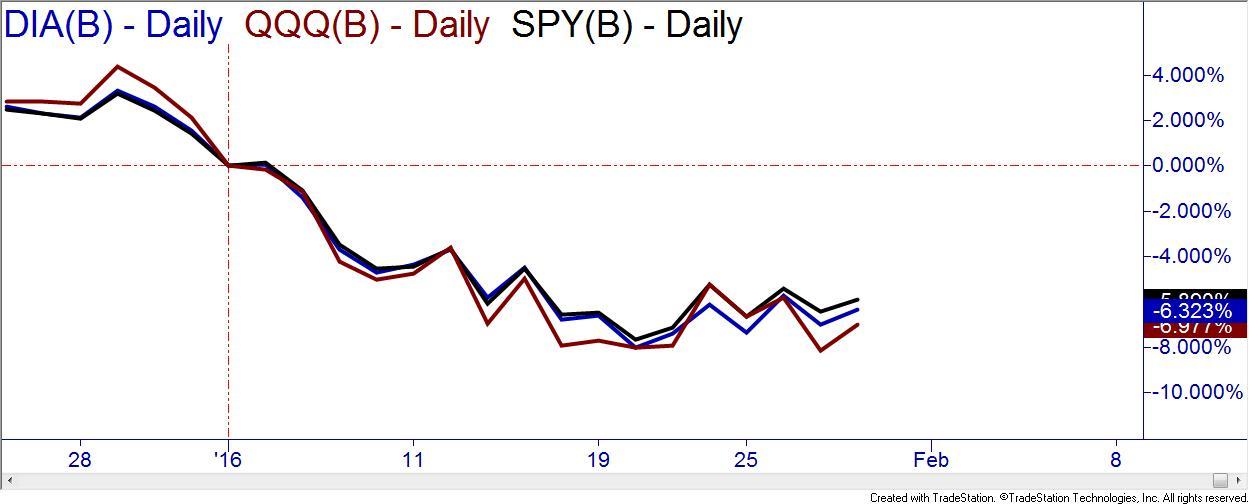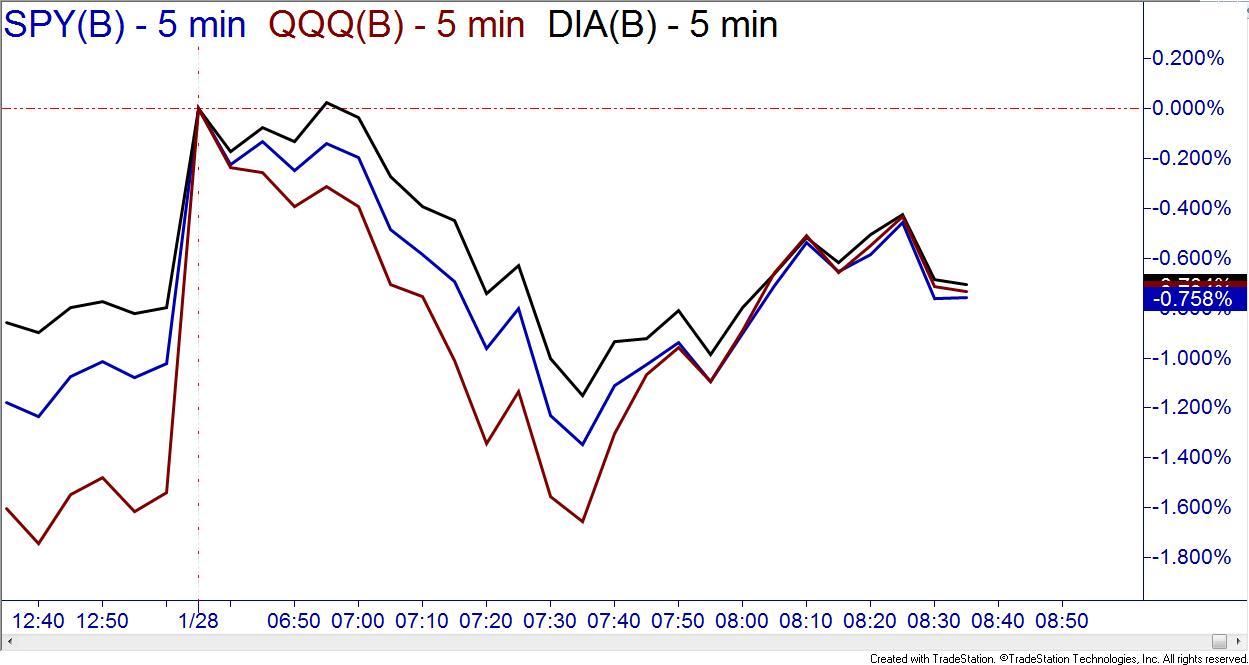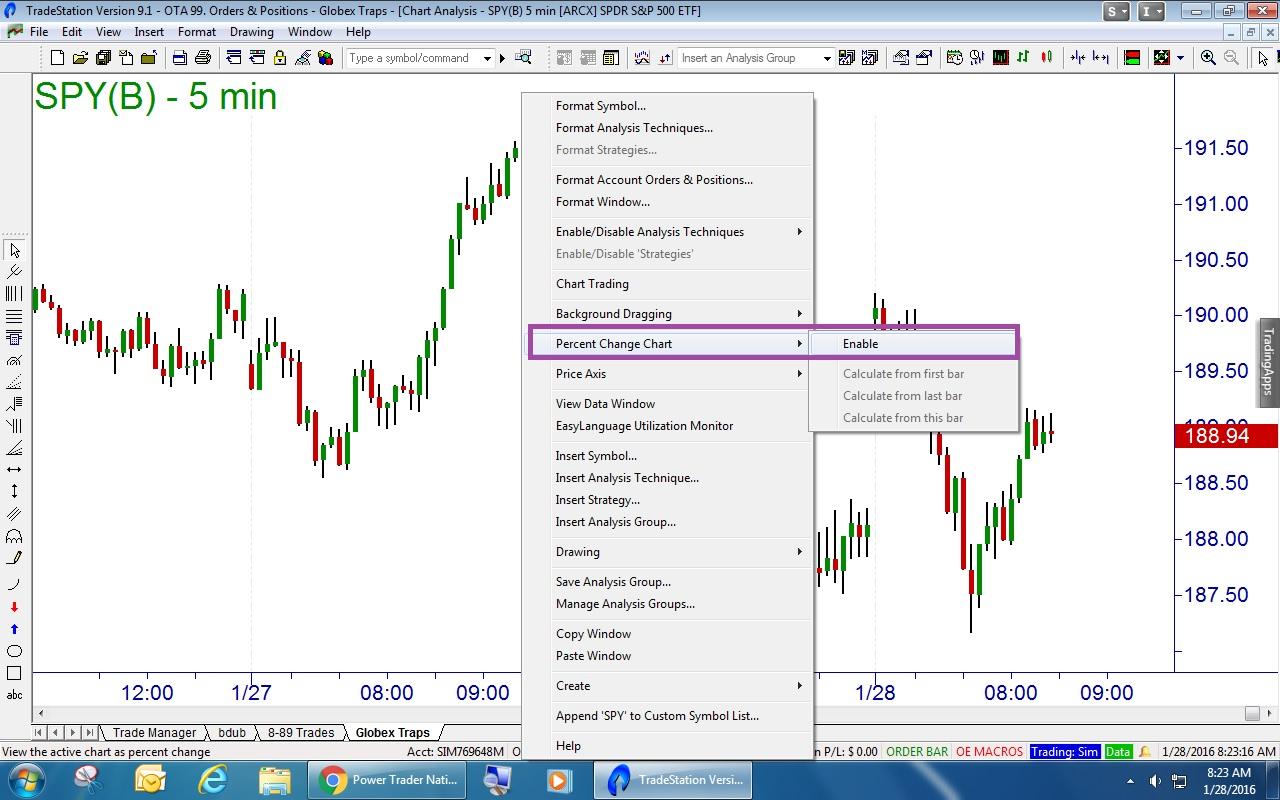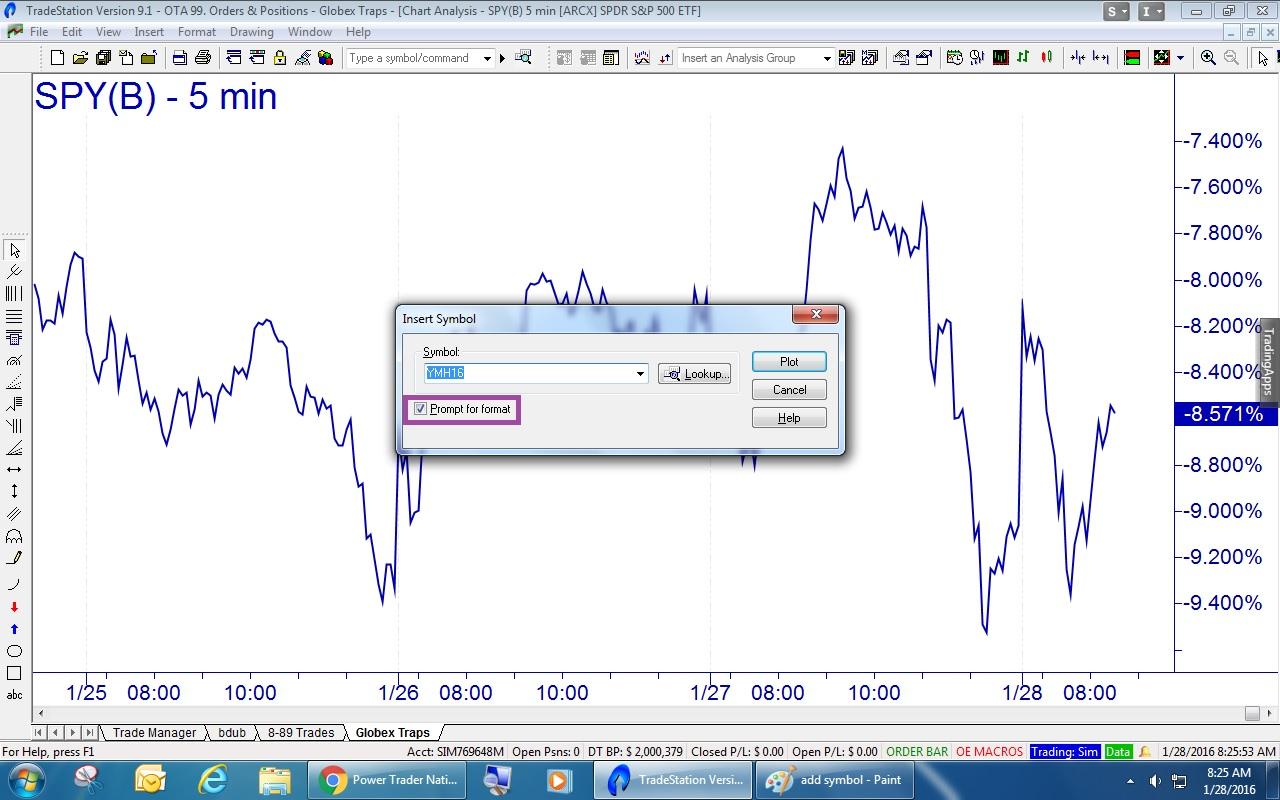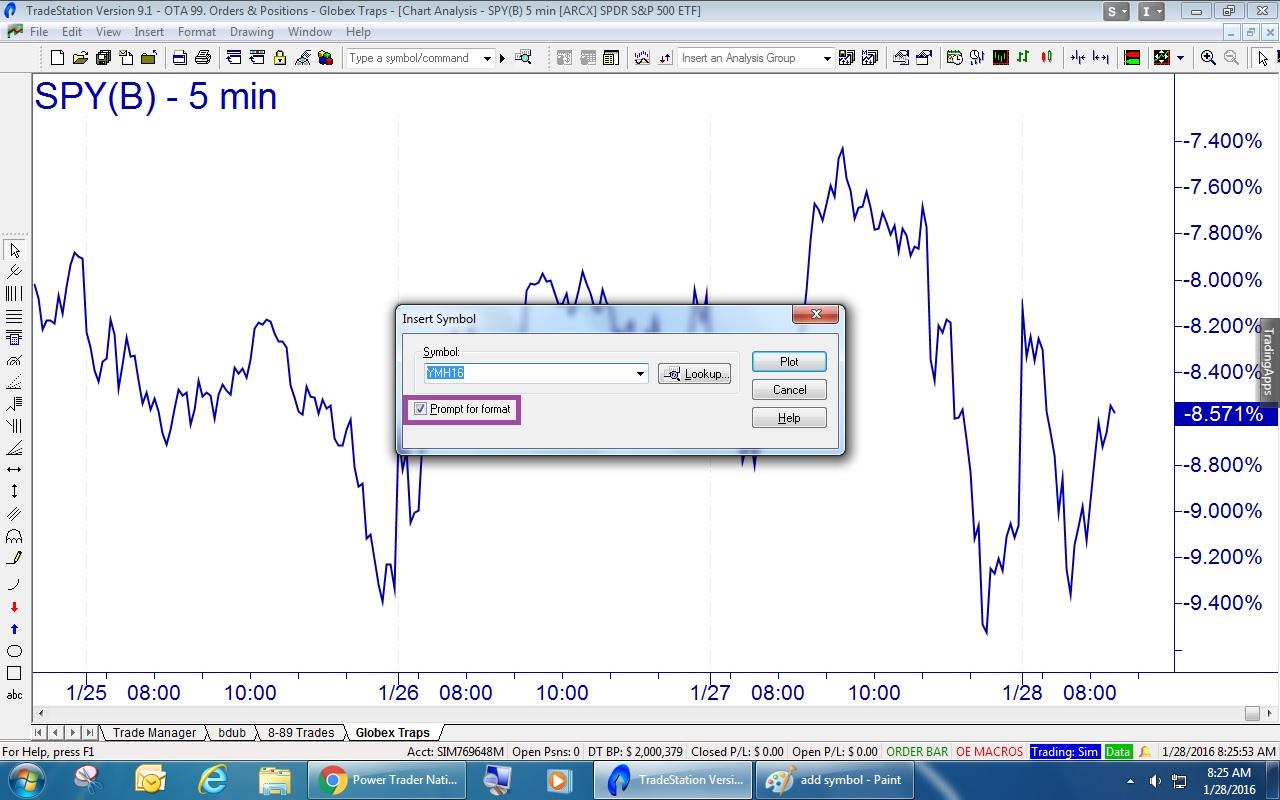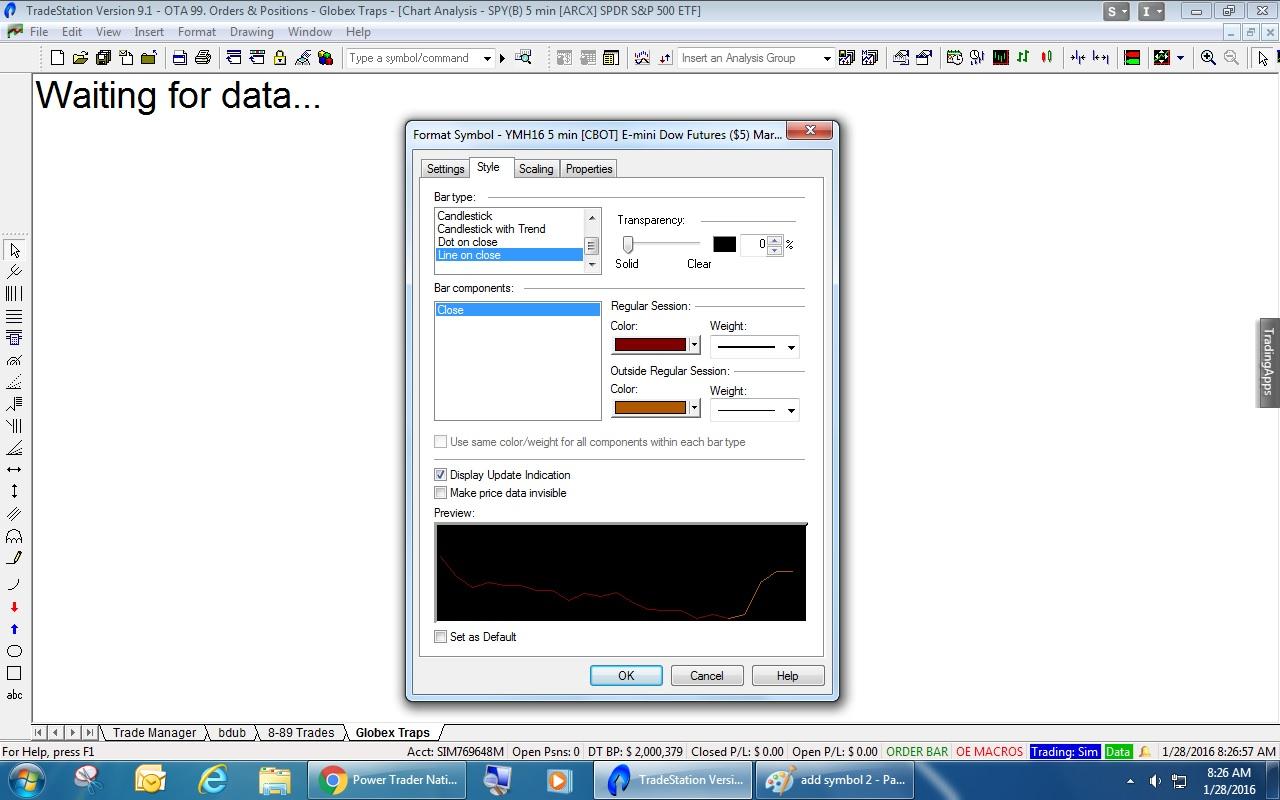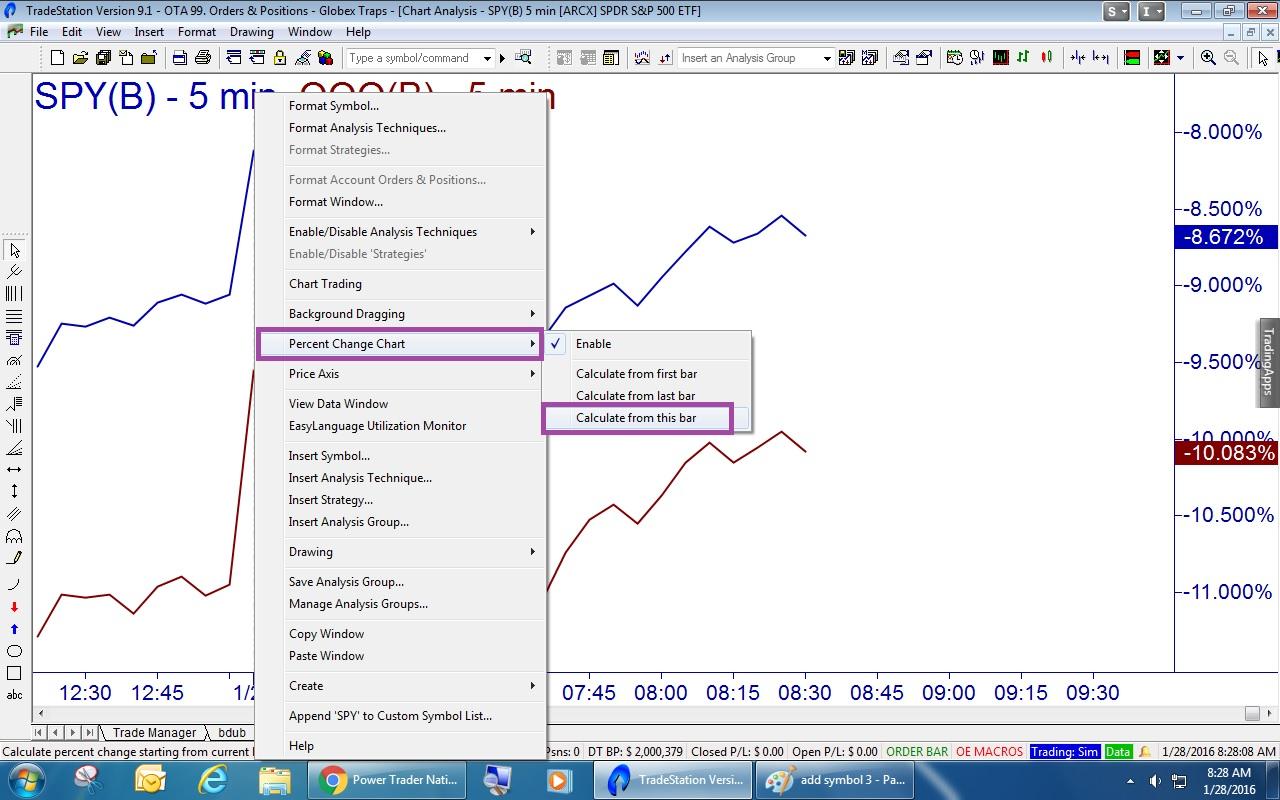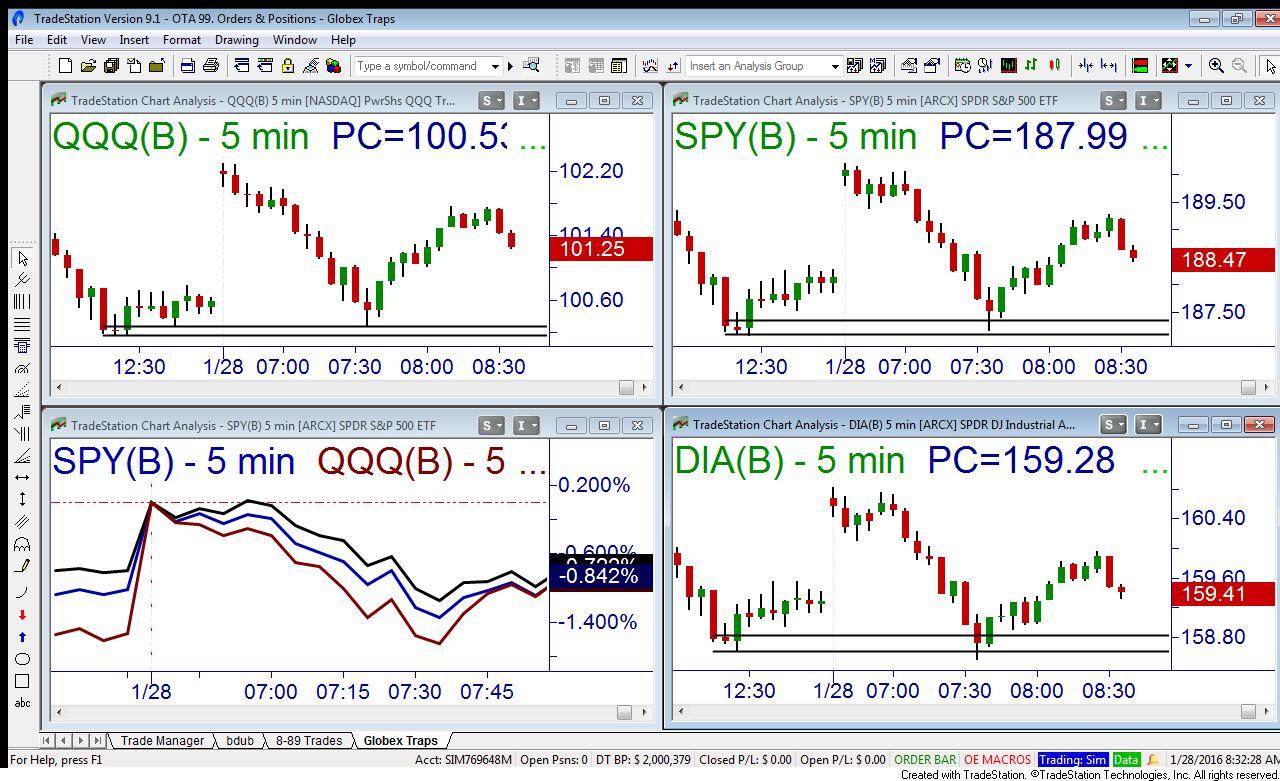Those of you who trade the equity index ETF’s or even futures markets most likely know the frustration of having prices move within a penny of your supply or demand zone only to see them retreat without you being able to enter or exit your trade. So, what causes this failure of price touching the zones or worse, makes prices just barely break a zone and trigger your stop before moving in your favor? The leader can.
There are three major equity market indexes: the Dow, the NASDAQ and the S&P 500. Throughout the day and even in longer term multi-day moves, these indexes should move in unison. They usually rise and fall together. However, since they are not comprised of the same stocks one or more of the indexes may move faster in the trend direction than the others.
Take the current year drop in the indexes. Looking at the following chart, you can see that QQQ, (the NASDAQ 100 ETF), is down more than the SPY (S&P 500 index ETF) and the DIA (Dow index ETF). This means that QQQ is the leader of the downward price trend and is likely to signal trend changes when it hits demand. The DIA and SPY could stop shy of their demand zones or even pierce them before the QQQ signals reversal.
This knowledge is also helpful for traders and investors who are working with individual stocks. Those of you who have attended Online Trading Academy’s Professional Trader Course know that we always have a chart of the S&P 500 or NASDAQ to view in addition to our stock chart in the class. On average, 50-60% of a stock’s movement will be directly related to the movement and trend of the broad market. 30-40% of the stock’s movement will be influenced by the sector of that stock. That leaves only 10% of influence from the company itself. Knowing which index is the leader and when it is possibly changing direction is an edge you need when making decisions on your stock.
TradeStation’s software allows me to chart the four indexes in one chart. This is something I have used extensively in the XLT programs to identify market trend and potential confirmation at supply and demand levels. I use the “Percent Change” feature to compare all three indexes and easily identify the leader in the dominant trend. I like to use the ETF’s: SPY, QQQ, DIA and can even add IWM to represent all of the indexes. You could easily substitute the indexes themselves or even the futures contracts. Since the futures are listed on different exchanges, you will have to adjust your chart to local time instead of “Exchange” time for them to overlay. You can see the completed chart example below.
You will need to begin with a chart of one of the ETF’s. Right click on any open space on the chart and select “Percent Change Chart.” Then “Enable” the chart.
Then one by one you will need to add the additional securities. Right mouse click on your chart and select “Insert Symbol.”
Type in the symbol you want to add but make sure that “Prompt for Format” is selected before pressing “Plot.”
Now you can change the color and thickness of the new symbol’s chart.
You will repeat the process for each symbol you wish to add to your charts. Once you have the symbols added, you need to start or “zero” the study at a certain point. In the case of daily charts, you can start from a major high or low that started the current trend. For intraday charts, you can use the opening candle of the day. You will need to right click your mouse on the time that you want your comparison to begin. You then select “Percentage Change” as you did before. This time you will select “Calculate from this bar” to start the study there.
As you can see from the following example, QQQ was the leader to the downside. Prices reversed when QQQ hit its demand. SPY also happened to be at demand at that time but DIA had slightly broken its demand as it waited for QQQ to tell it when to reverse.
This can be a handy odds enhancer while trading the markets and has helped many over the years. To learn more odds enhancers and the Core Strategy, come visit your local Online Trading Academy center today.
This content is intended to provide educational information only. This information should not be construed as individual or customized legal, tax, financial or investment services. As each individual's situation is unique, a qualified professional should be consulted before making legal, tax, financial and investment decisions. The educational information provided in this article does not comprise any course or a part of any course that may be used as an educational credit for any certification purpose and will not prepare any User to be accredited for any licenses in any industry and will not prepare any User to get a job. Reproduced by permission from OTAcademy.com click here for Terms of Use: https://www.otacademy.com/about/terms
Editors’ Picks
EUR/USD edges lower toward 1.0700 post-US PCE

EUR/USD stays under modest bearish pressure but manages to hold above 1.0700 in the American session on Friday. The US Dollar (USD) gathers strength against its rivals after the stronger-than-forecast PCE inflation data, not allowing the pair to gain traction.
GBP/USD retreats to 1.2500 on renewed USD strength

GBP/USD lost its traction and turned negative on the day near 1.2500. Following the stronger-than-expected PCE inflation readings from the US, the USD stays resilient and makes it difficult for the pair to gather recovery momentum.
Gold struggles to hold above $2,350 following US inflation

Gold turned south and declined toward $2,340, erasing a large portion of its daily gains, as the USD benefited from PCE inflation data. The benchmark 10-year US yield, however, stays in negative territory and helps XAU/USD limit its losses.
Bitcoin Weekly Forecast: BTC’s next breakout could propel it to $80,000 Premium

Bitcoin’s recent price consolidation could be nearing its end as technical indicators and on-chain metrics suggest a potential upward breakout. However, this move would not be straightforward and could punish impatient investors.
Week ahead – Hawkish risk as Fed and NFP on tap, Eurozone data eyed too

Fed meets on Wednesday as US inflation stays elevated. Will Friday’s jobs report bring relief or more angst for the markets? Eurozone flash GDP and CPI numbers in focus for the Euro.
RECOMMENDED LESSONS
Making money in forex is easy if you know how the bankers trade!
Discover how to make money in forex is easy if you know how the bankers trade!
5 Forex News Events You Need To Know
In the fast moving world of currency markets, it is extremely important for new traders to know the list of important forex news...
Top 10 Chart Patterns Every Trader Should Know
Chart patterns are one of the most effective trading tools for a trader. They are pure price-action, and form on the basis of underlying buying and...
7 Ways to Avoid Forex Scams
The forex industry is recently seeing more and more scams. Here are 7 ways to avoid losing your money in such scams: Forex scams are becoming frequent. Michael Greenberg reports on luxurious expenses, including a submarine bought from the money taken from forex traders. Here’s another report of a forex fraud. So, how can we avoid falling in such forex scams?
What Are the 10 Fatal Mistakes Traders Make
Trading is exciting. Trading is hard. Trading is extremely hard. Some say that it takes more than 10,000 hours to master. Others believe that trading is the way to quick riches. They might be both wrong. What is important to know that no matter how experienced you are, mistakes will be part of the trading process.
